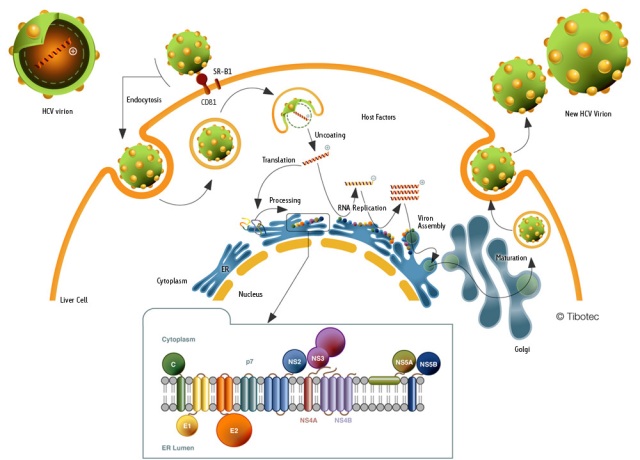This lecture discussed some basic principles of hepatitis C and its viral kinetics. Hepatitis C, as with all viruses, seeks entry into human host cells to evade the dangerous extracellular milieu, replete with cytokines, natural killer cells, macrophages and interferons- each seeking to destroy the virus. Once inside the hospitable hepatocyte, the HCV uses its RNA as a template for replication.
And replicate it does! Into the trillions of new copies every day. When we obtain a viral load, it tells us nothing about the turnover of HCV replicons at the time of the blood draw. All we see is a static snapshot of how many virions are in the circulation at that moment. For example, the viral load may be 100,000 units/mL at that moment; it is possible that 500,000 virions were being produced and 500,000 destroyed…or just as possible that only 500 were produced and 500 destroyed- the viral load is essentially independent of this turnover.
The lecture also delved into the role of Bcells in HCV viral control. We know much about CD4 and CD8 Tcells, though little is known about the role of Bcells. The Bcell makes antibodies against HCV, but what do these antibodies do? Of course, nature does not produce anything in vain. Bcell antibodies may help control viral load, though the mechanism requires further study.


You must be logged in to post a comment.